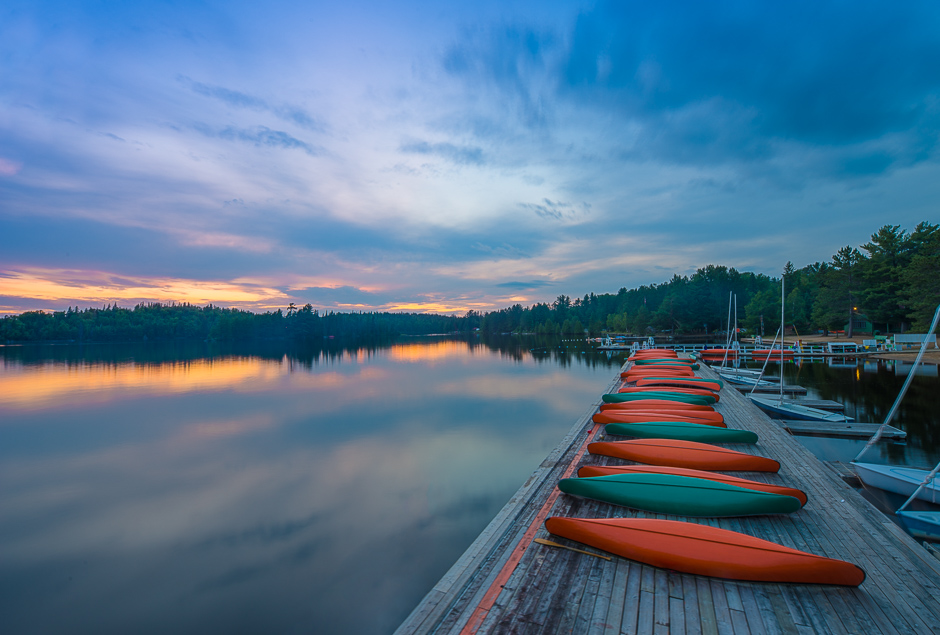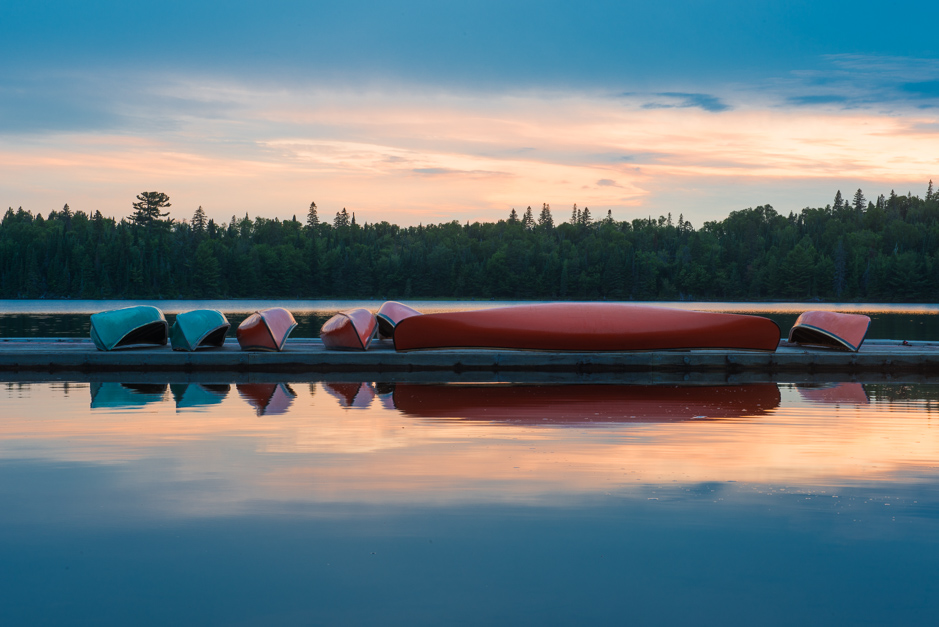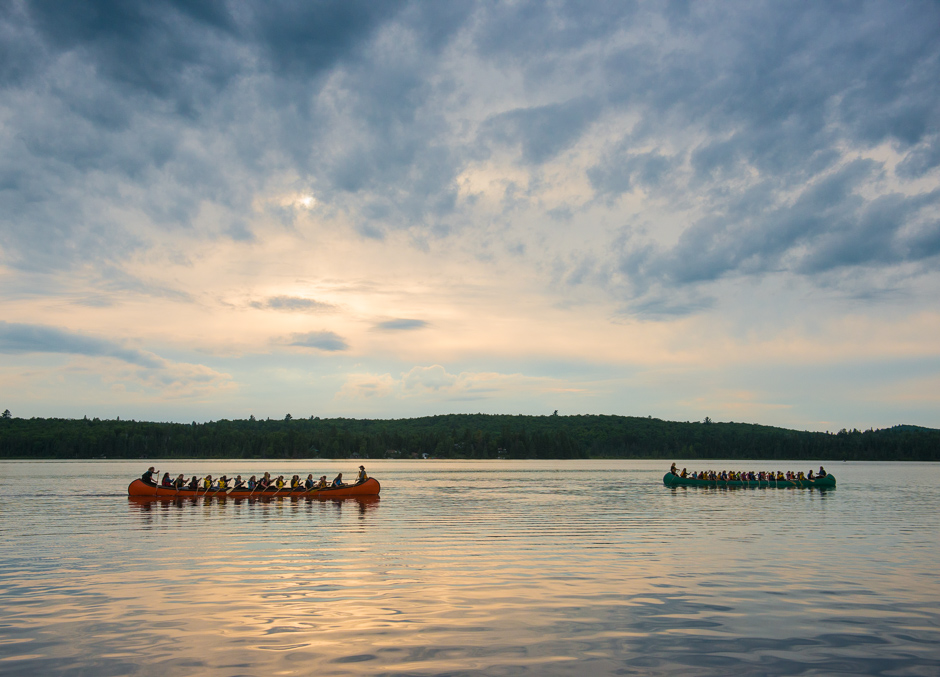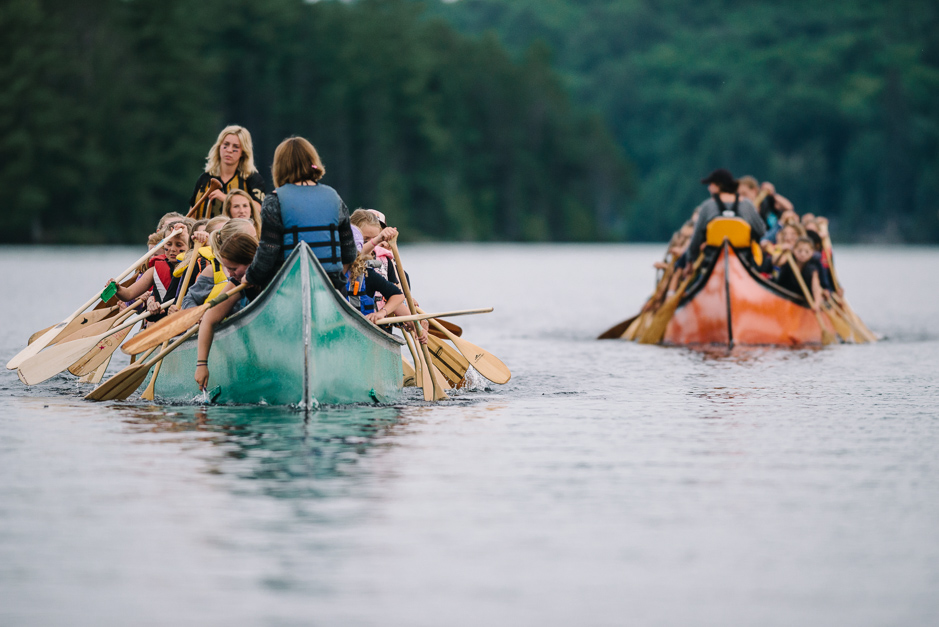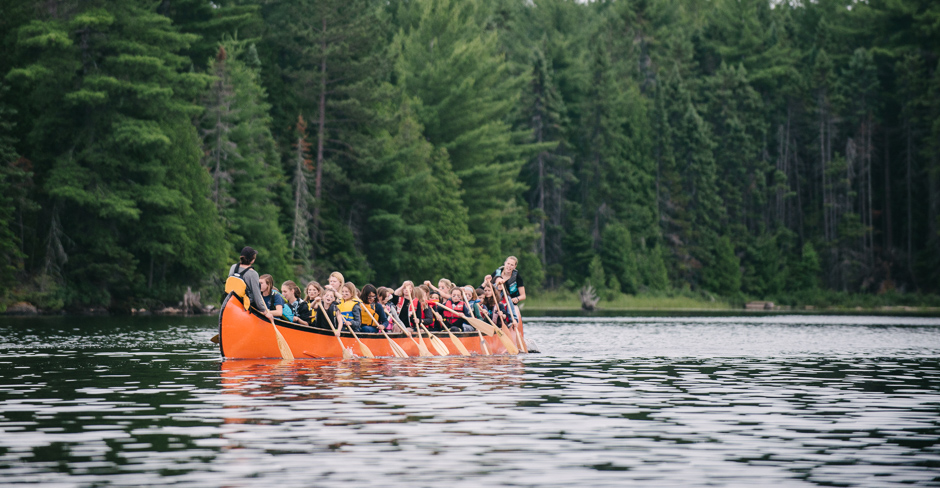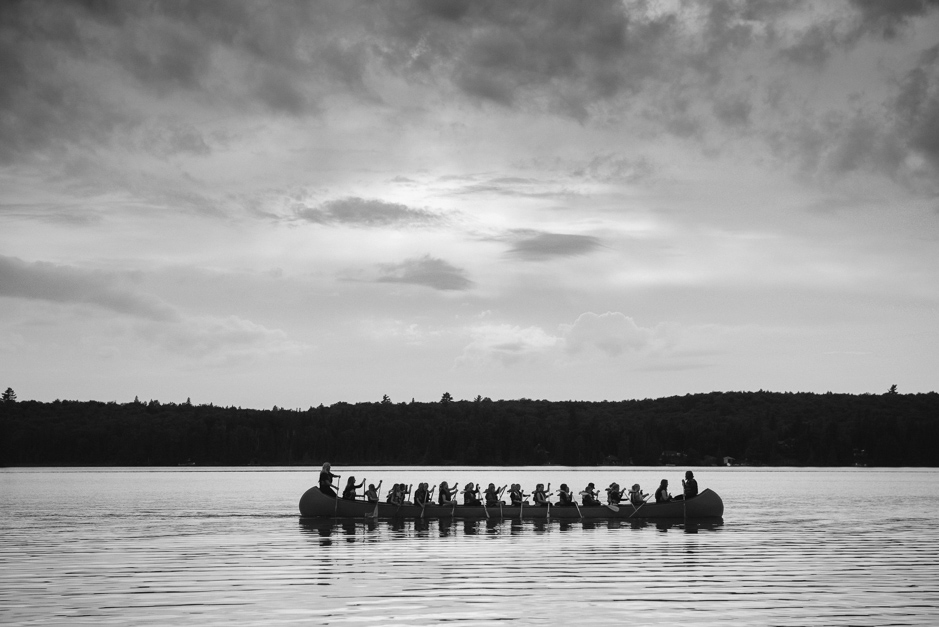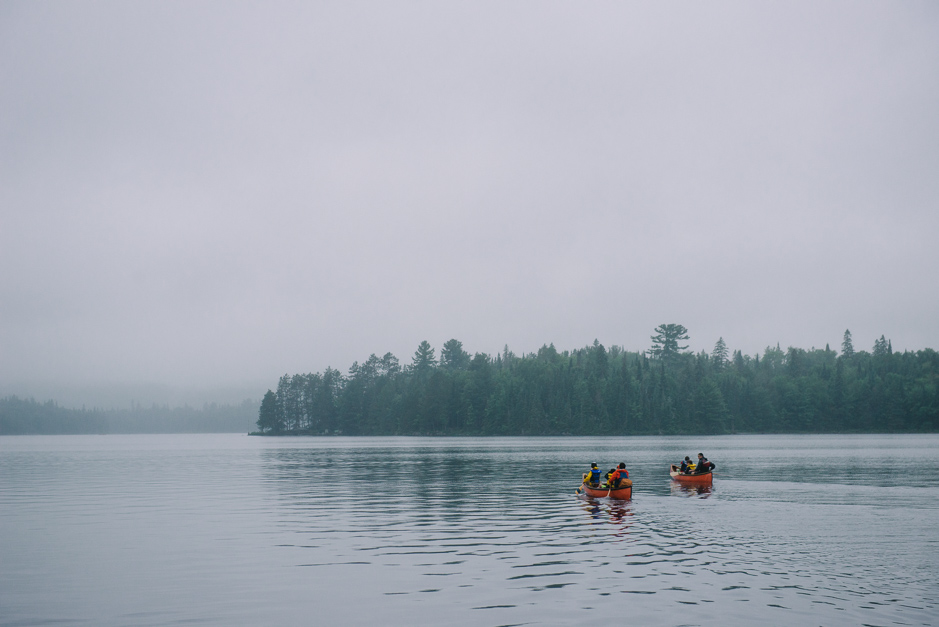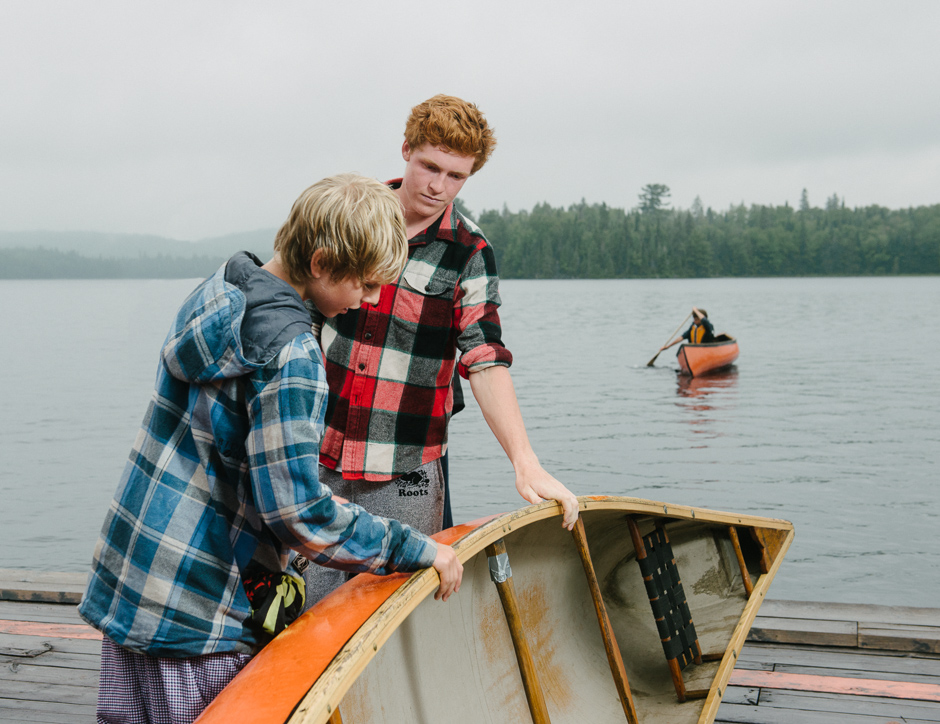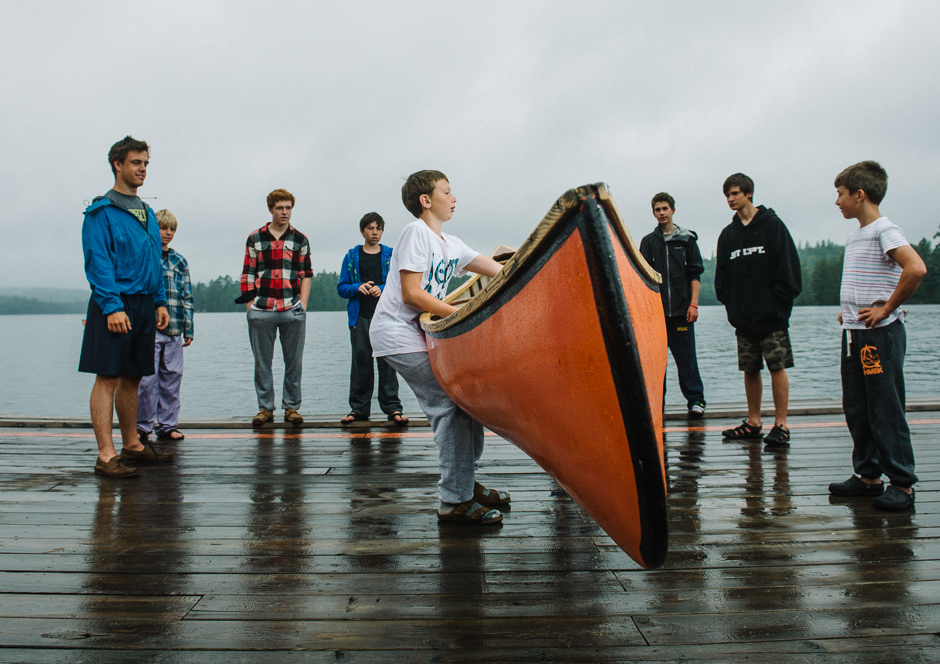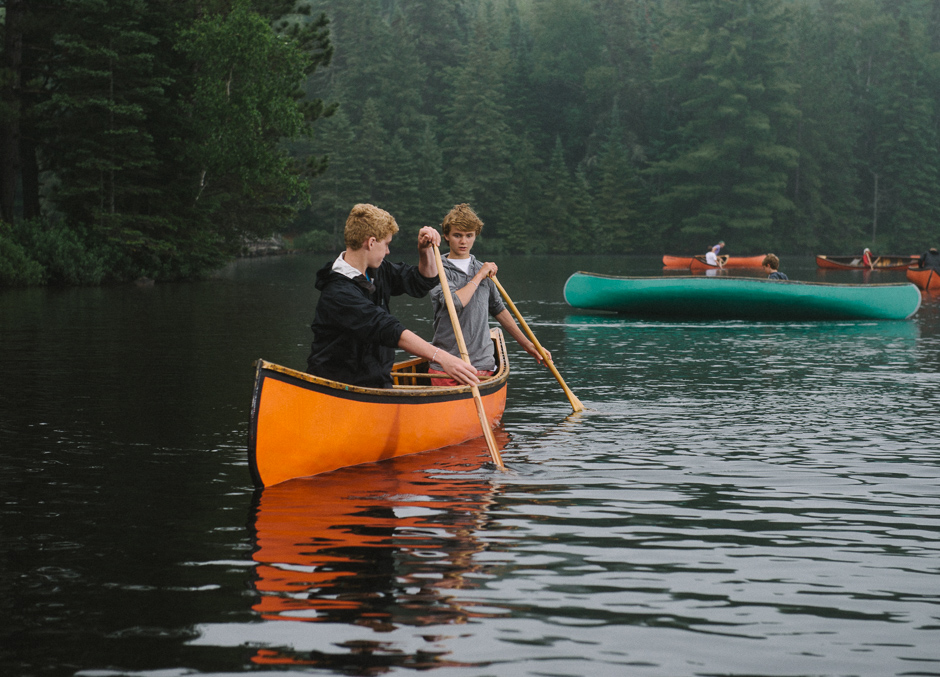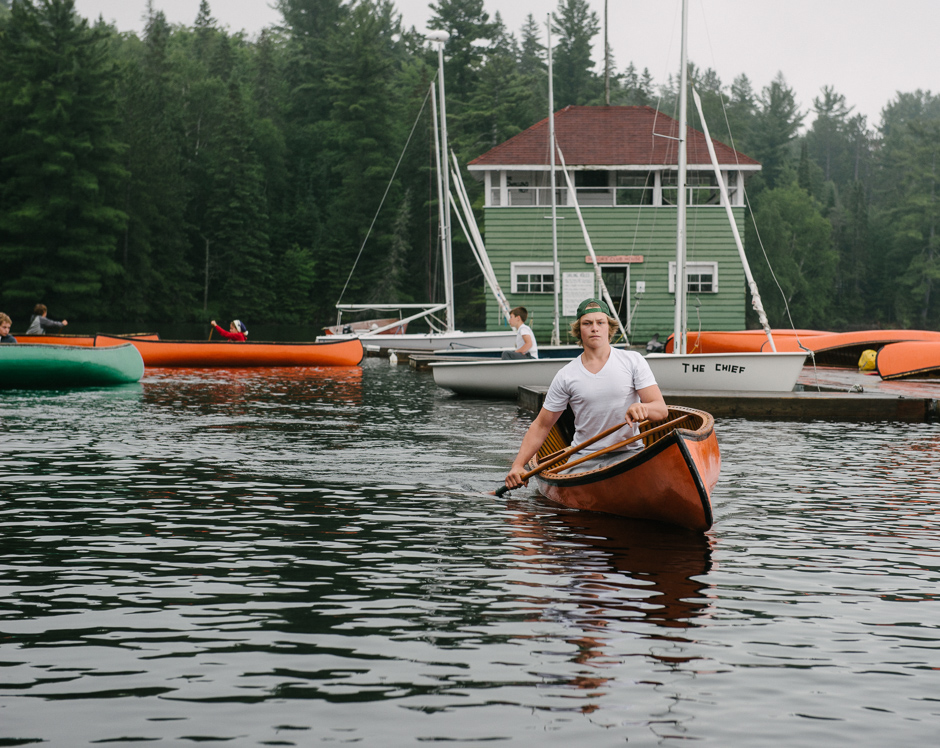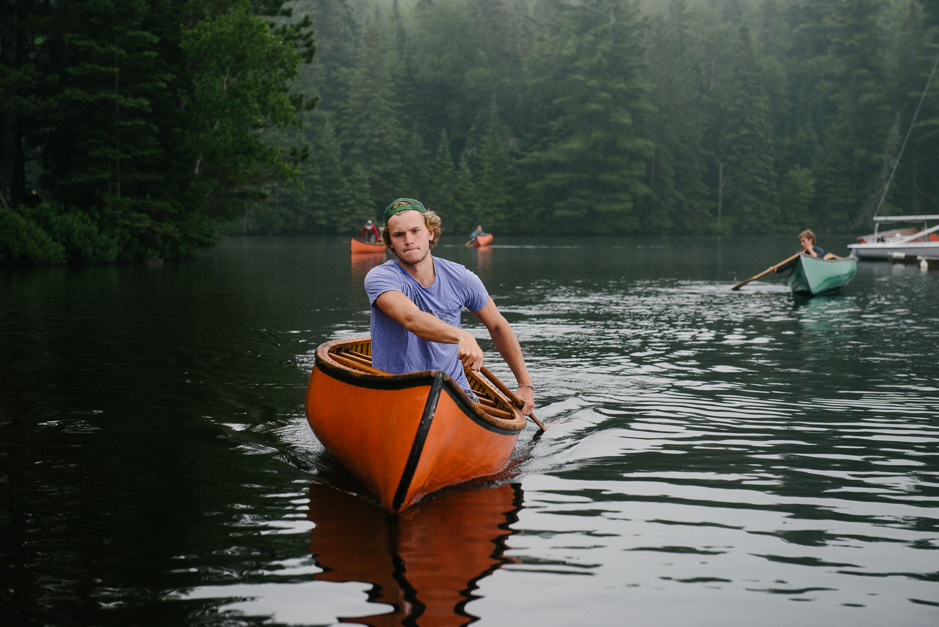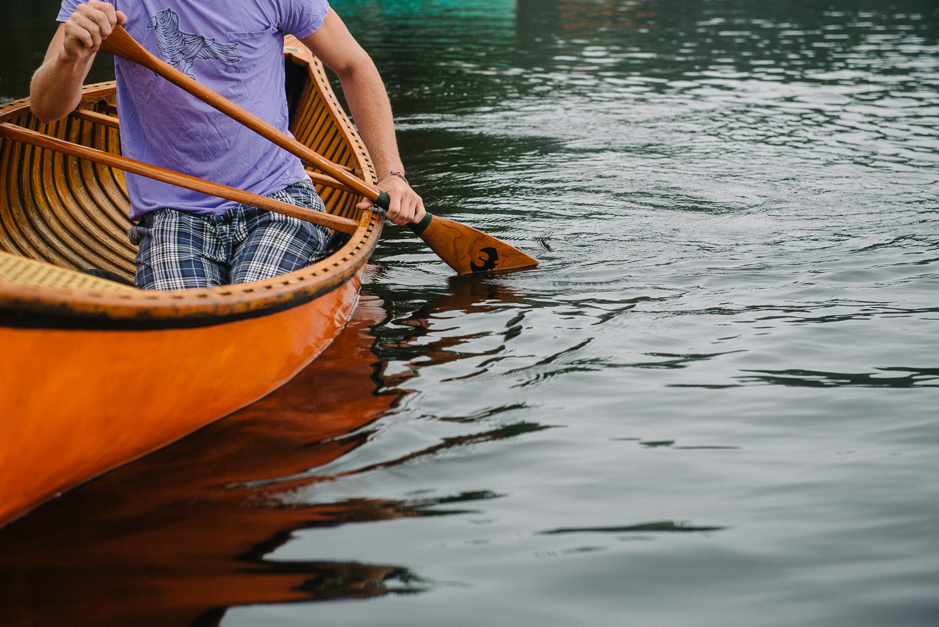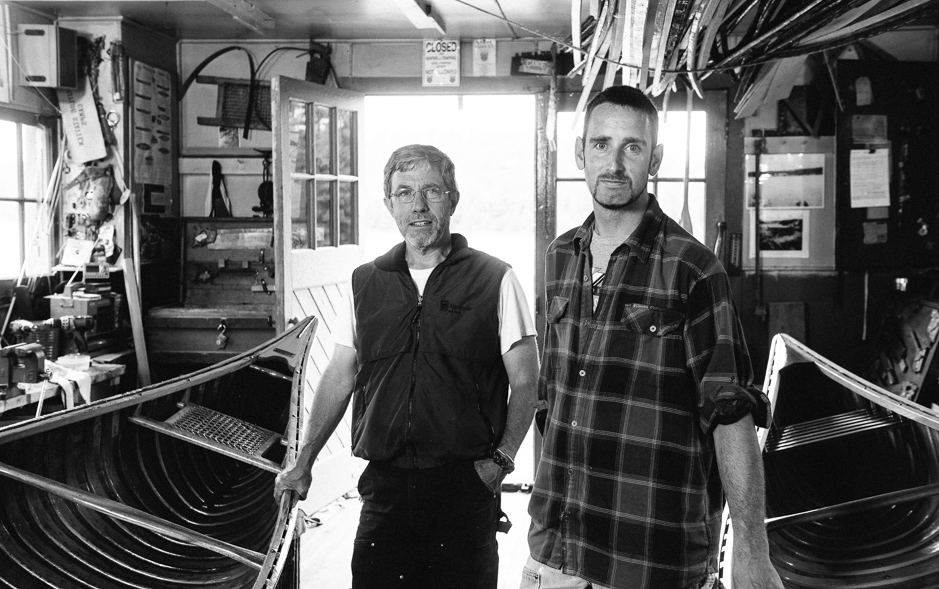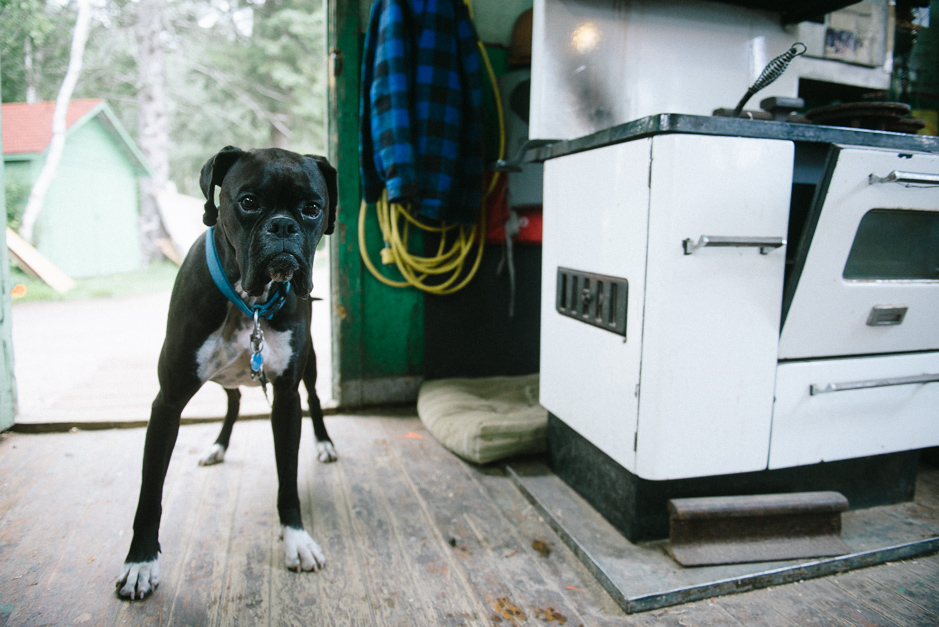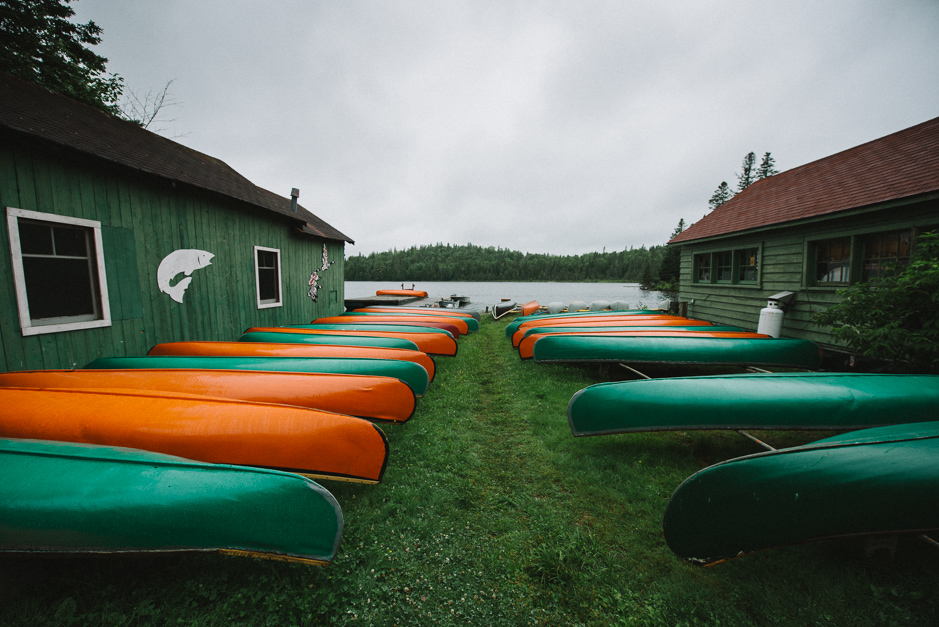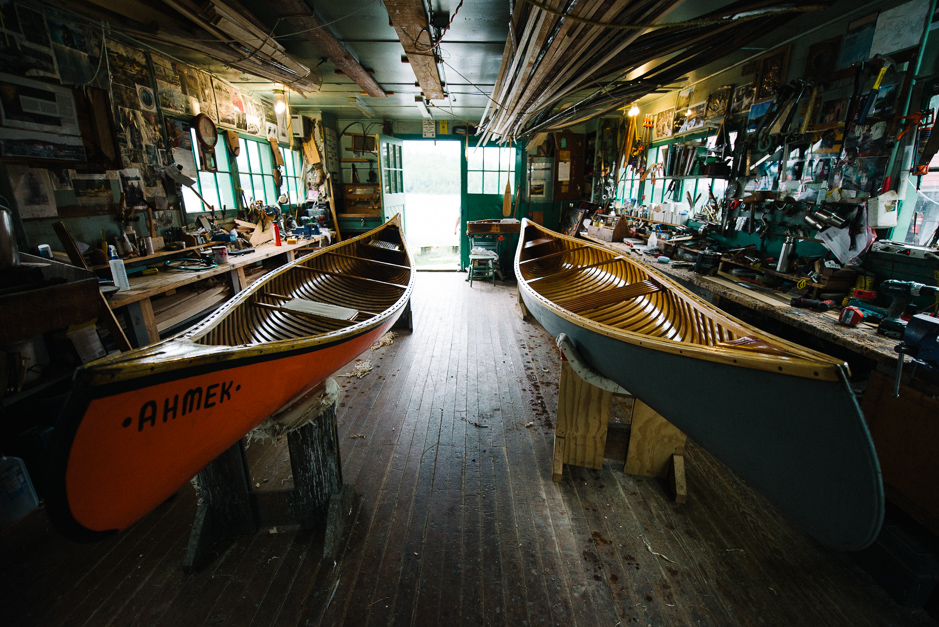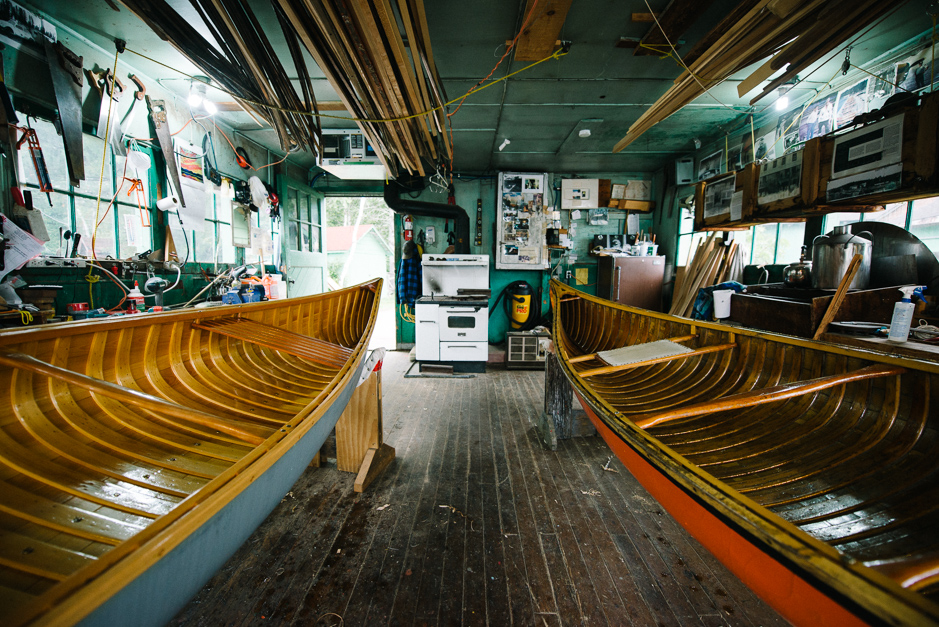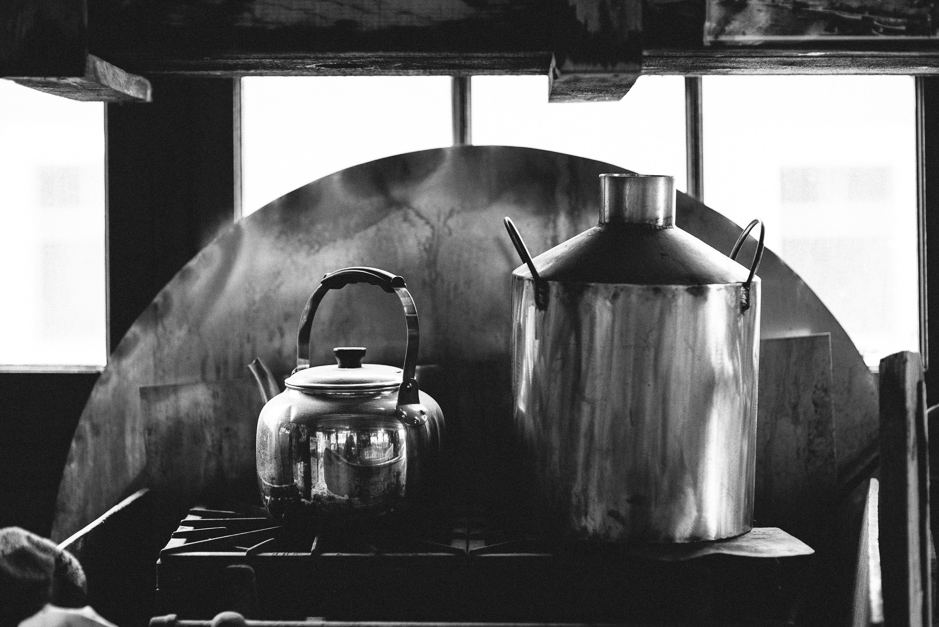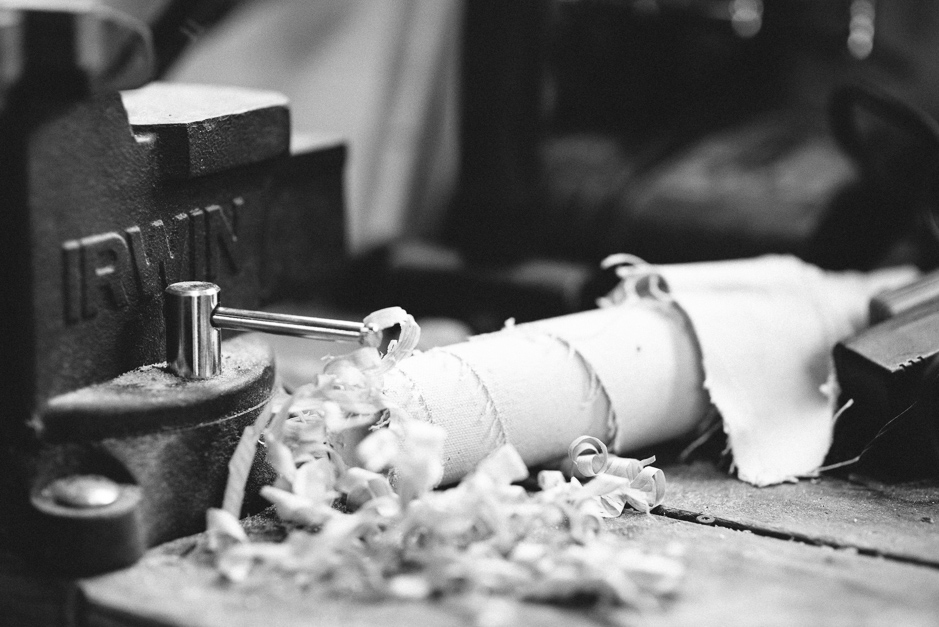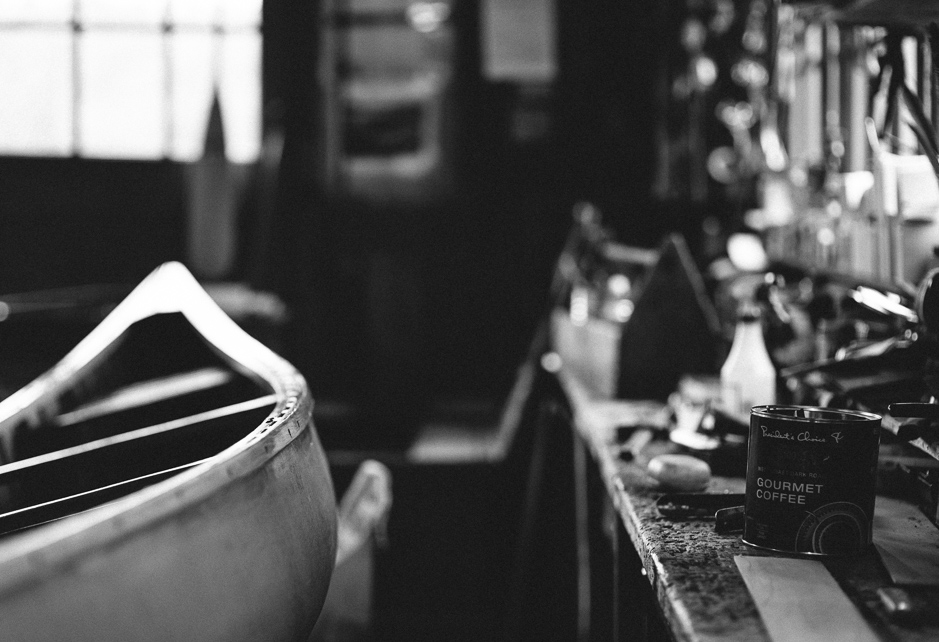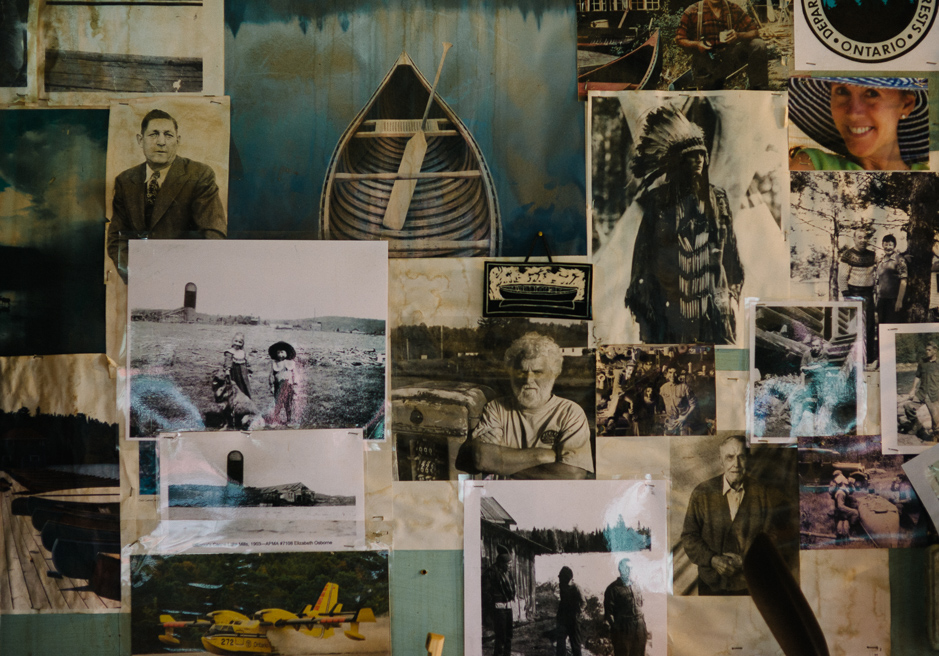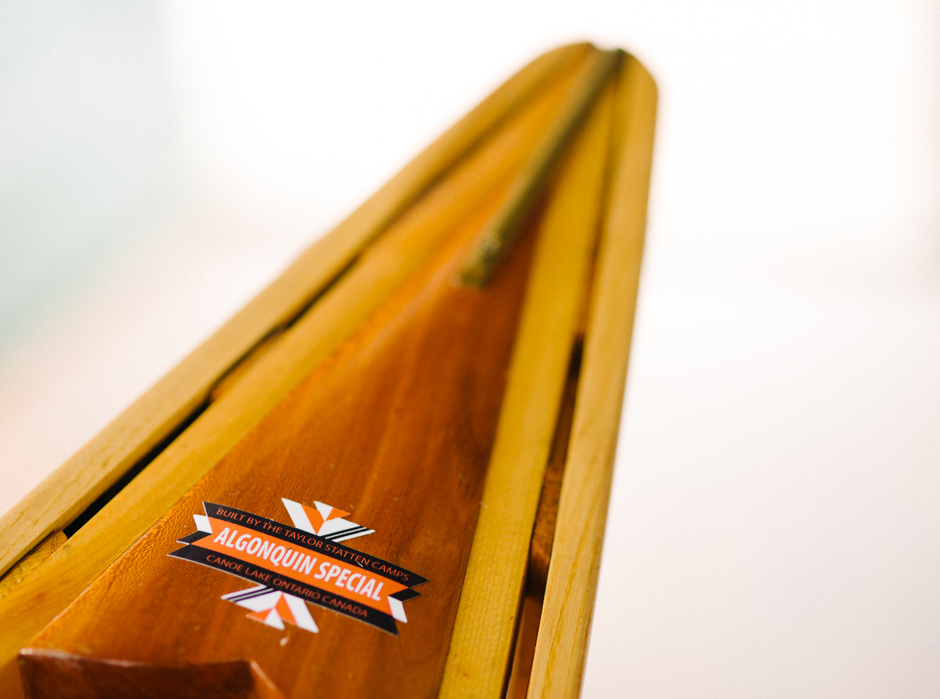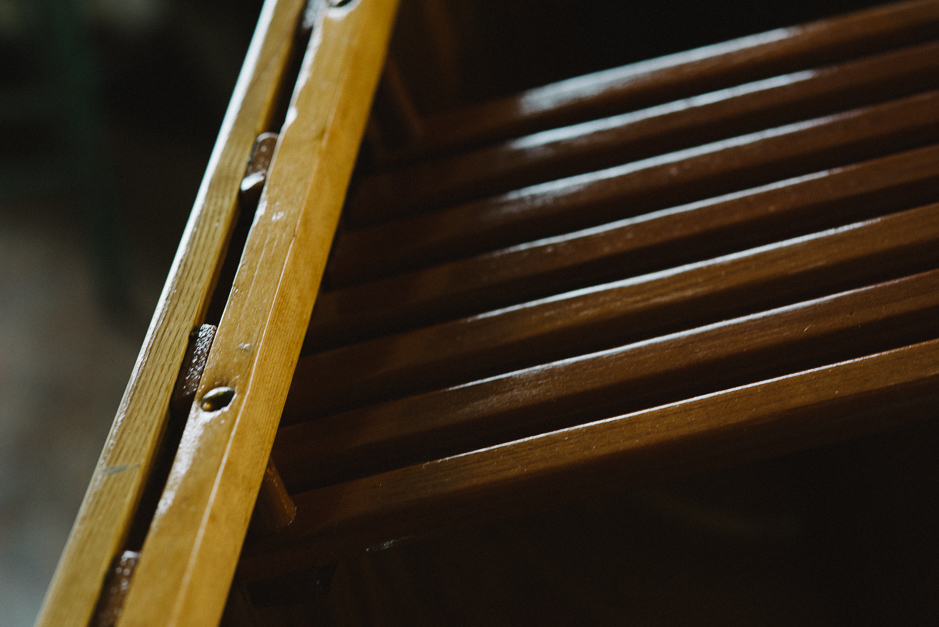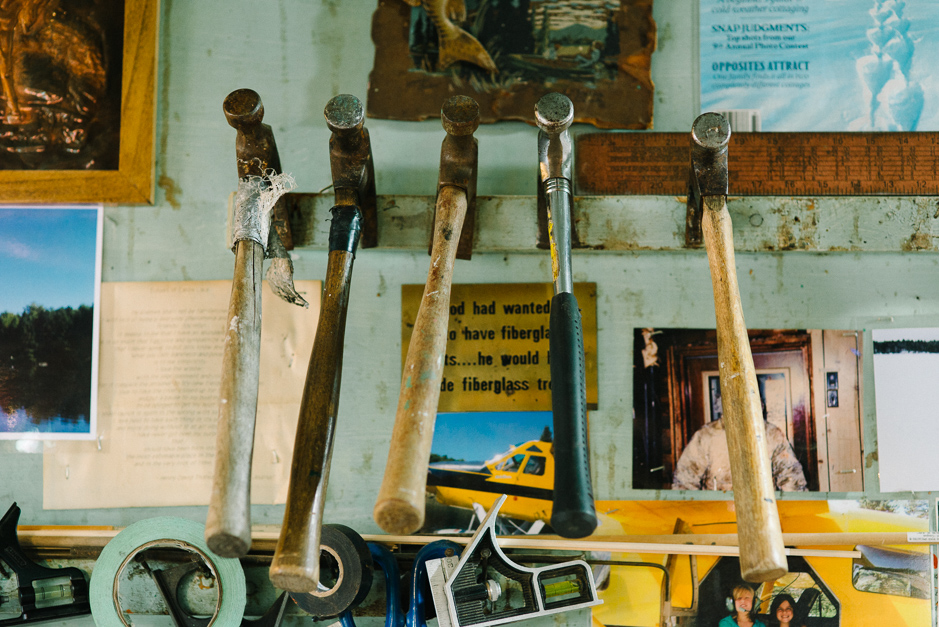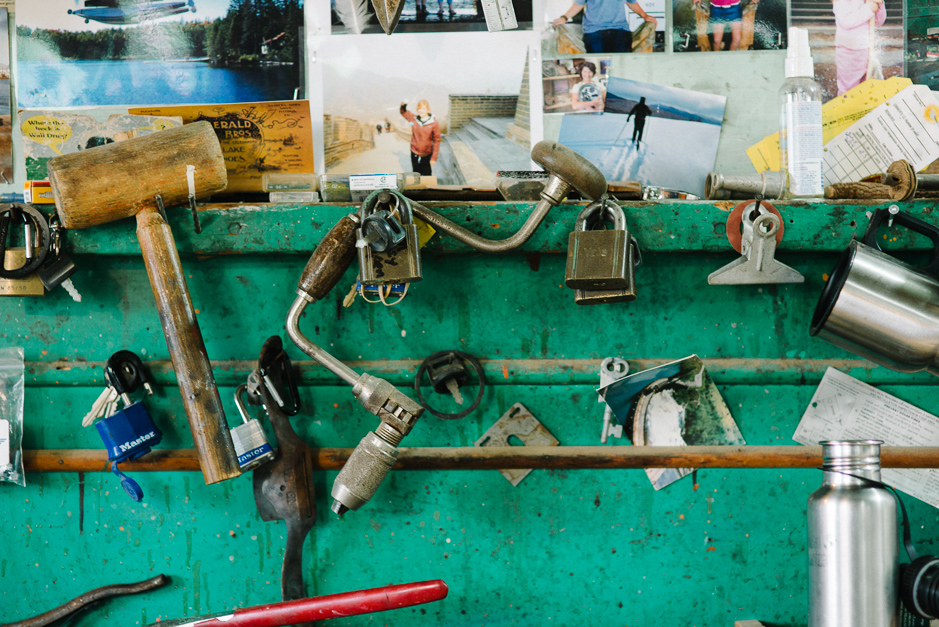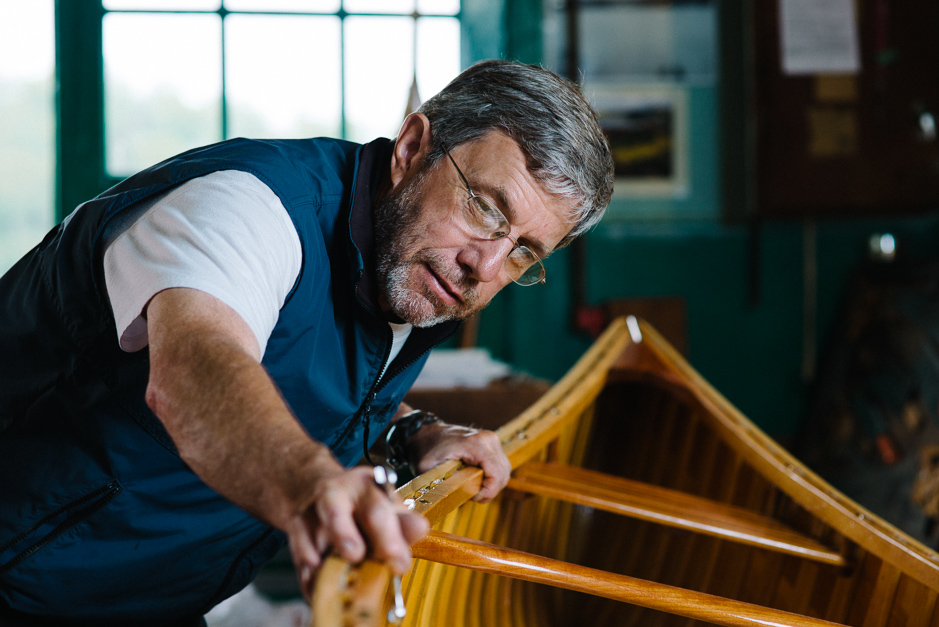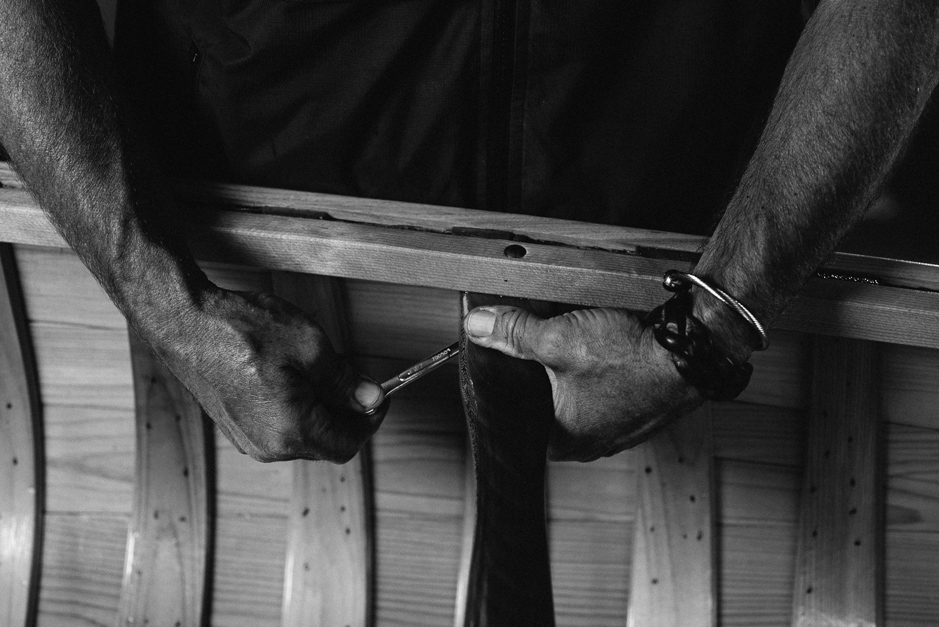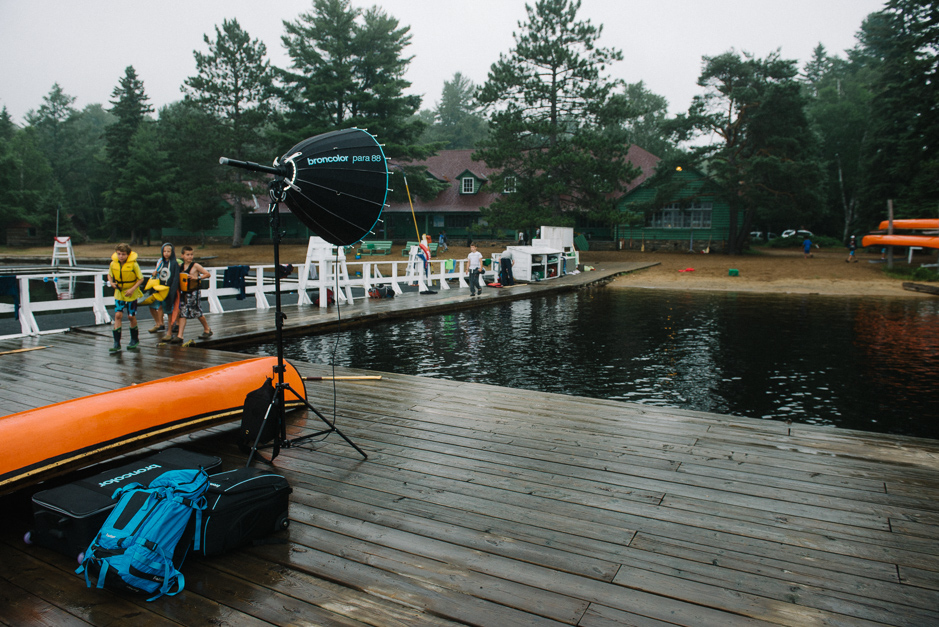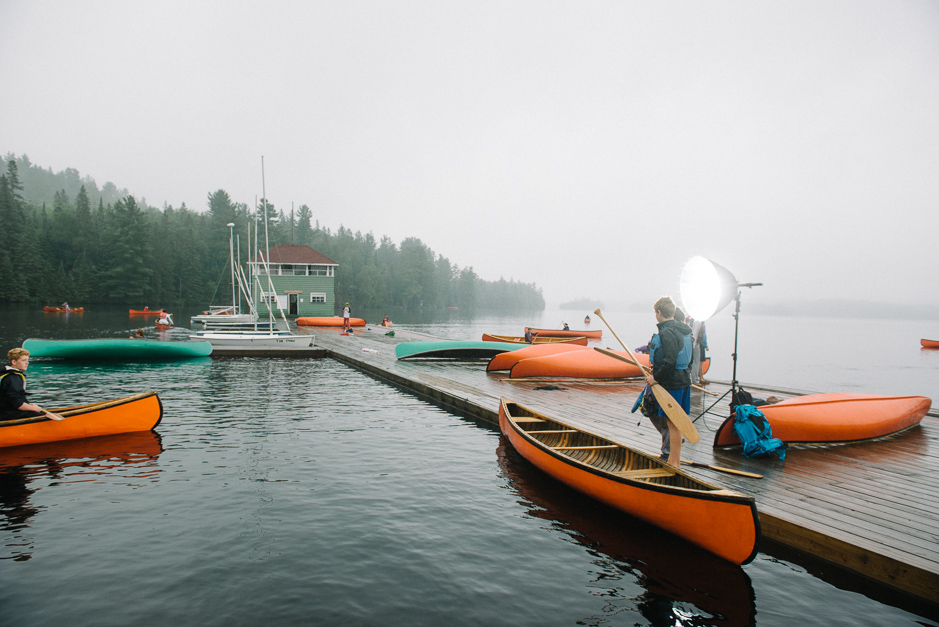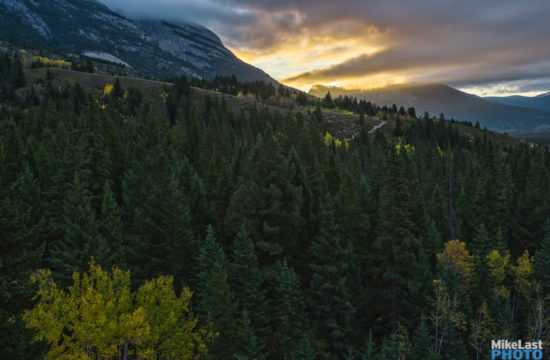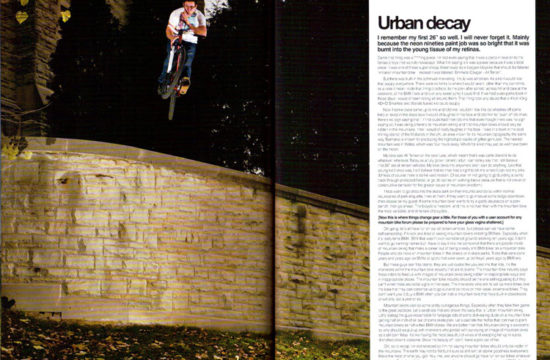If there is a lake in Algonquin Park that can truly live up to it’s name, that has to be Canoe Lake. While working with the Taylor Statten Camps last summer, I took some time the day after the shoot a personal project, focusing on their canoes. If you’ve ever been on a canoe trip through Algonquin Park, you’ve probably seen the green and orange on the rocks at the start and end of every portage. Since going to the camp in my younger days for eight straight summers, I’ve always loved paddling a cedar strip canoe across a flat lake. Bonus points if it’s at sunset. I can’t think of a better feeling in the world.
The Taylor Statten Camps have a fleet of over 275 canoes, with 200 of them being classic canvas covered cedar strip canoes. There are canoes of all shapes, sizes and functions. The war canoes, the freighter canoes, the tripping canoes, a cedar strip that has been to every single lake in Algonquin Park as part of the Millennium trip, and even a traditional birch bark canoe.
The War Canoes
The war canoes at Camp Ahmek and Camp Wapomeo are considered the largest wood and canvas canoes in the world (42 ft. long, 59 inches wide at the midpoint). They can seat over 30 paddlers, 3 across in the middle. Made by the Peterborough Canoe Company in 1926 on a special work order from Taylor Statten (The Chief ), they are still used daily at Ahmek and Wapomeo during the summer for transportation. They are set to undergo a major rennovation in 2015/2016.
The Canoe Program
Every day, campers attend mandatory canoe lessons at the camp, learning fundamentals of tandem and solo paddling. With canoe tripping as a core focus of the camp, everyone needs to pull their weight. Campers also learn canoe care, maintenance, portaging techniques and advanced solo paddling techniques in the camps fleet of Masters canoes. The Masters canoes lack a keel for extreme maneuverability in the water, easily turning on a dime.
The Shop
Tucked away amongst the maintenance sheds is the Canoe Shop, run by these two gents, Dave and Dave. Cedar strip canoes can withstand a lot of abuse, but when things go wrong, usually there isn’t a quick fix. Eventually broken ribs need replacing and canvases need to be stripped, replaced and repainted. Every year, Dave and Dave also manage to build a few canoes from scratch, based on a mould called the Algonquin Special. The kettle below is used with a steam box above, allowing the canoe ribs to be heated and bent around the mould like a wet noodle. The Canoe Shop is a time capsule of incredible memories, decorated with photos of the camps rich history. Visit MerrittSupply.com if you want to order any supplies online.
If God had wanted us to have fiberglass boats…
he would have made fiberglass trees.
Behind the Scenes
Images for this shoot were done entirely on the Nikon D800. For the opening segment, the colours of the canoes provided great pop against the sunset, and everything was shot natural light on a tripod. For the war canoe segment, we used a chase boat (although engines on Canoe Lake are restricted to 20HP, so we couldn’t fall too far behind) with a 24-70mm F2.8 on one body, and alternated between a 70-200mm F2.8 and 300mm F2.8 on an alternate body.
On the second day, while shooting the Canoe Program images, I awoke to a completely overcast day with a steady drizzle of rain. I brought out the Broncolor Move 1200 with the Broncolor Para 88 to provide some much needed depth and life. The canoeing area is enclosed on three sides which allowed me to wander the docks and get some varying angles, while the Para 88 provided a great wrapping light, putting out a big light feel over the long distance.
In The Shop, I’d planned to use the Para 88, but the low ceilings and tight space had me rethink that. I switched to the Broncolor Flex 70×70 softbox included with the Move 2 Kit to provide more room for movement.




